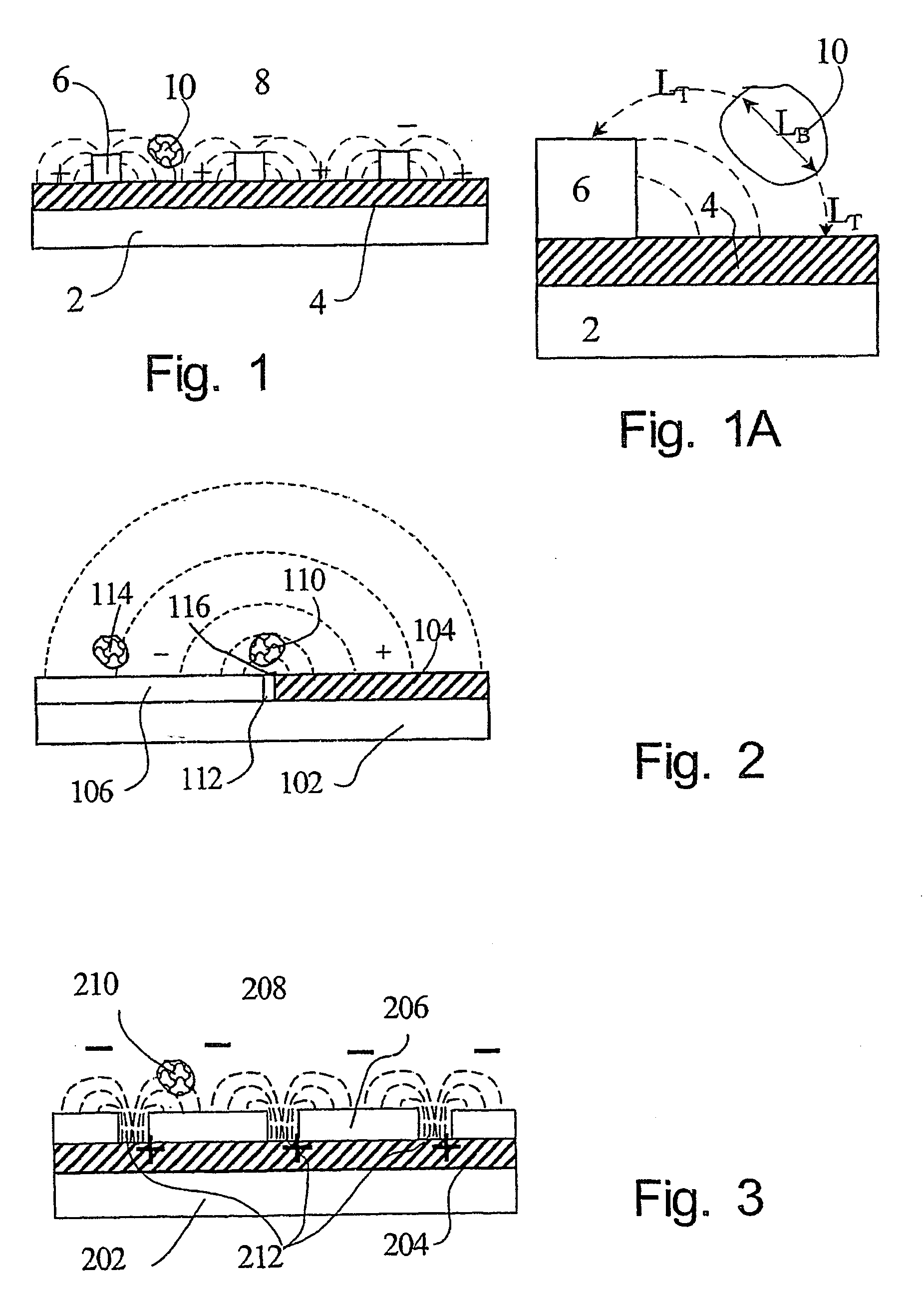Biologically inhibiting material a method of producing said material as well as the use of said material for inhibiting live cells
a technology of biological inhibition and material, which is applied in the direction of biocide, disinfection, specific water treatment objectives, etc., can solve the problems of small residues that can have a serious effect on both health and cost, and it is difficult to completely avoid the area of process equipment, and achieves a strong cell-inhibiting effect.
- Summary
- Abstract
- Description
- Claims
- Application Information
AI Technical Summary
Benefits of technology
Problems solved by technology
Method used
Image
Examples
example 1
Pretreatment
[0078] A plate of technical silver (99.75%) of 20×10×1 mm is degreased at room temperature (20 to 25° C.) through an electrolytic degreasing (cathodic) at 10 A / dm2 for ten minutes and then rinsed in distilled water. Possible oxides and alkali residues are removed through pickling with dry acid and mechanical agitation for one minute followed by rinsing with distilled water, said dry acid being a solid commercial product based on sodium bifluoride.
Silver Plating
[0079] The pre-treated plate is strike silver plated (i.e. is given a short initial silver plating) in a bath containing 3.75 g / l of AgCN (80.5%) and 115 g / l of KCN with stainless steel electrodes at 1 A / dm2 for approximately 60 seconds with mechanical agitation. After rinsing in distilled water, a technical silver plating is applied in a bath containing 45 g / l of AgCN (80.5%), 115 g / l of KCN and 15 g / l of K2CO3 at 1 A / dm2 for 20 minutes with mechanical agitation. The plate is rinsed in distilled water and dri...
example 2
[0083] A stainless steel plate of 20×10×1 mm of AISI 316 steel with 2B finish is pre-treated in a conventional manner with Wood nickel strike (100 g / l NiCl2 and 100 ml / l HCl 37%) and strike silver plated in a bath containing 3.75 g / l of AgCN (80.5%) and 115 g / l of KCN with stainless steel electrodes at 1 A / dm2 for approximately 60 seconds with mechanical agitation. After rinsing in distilled water, a technical silver plating is applied in a bath containing 45 g / l of AgCN (80.5%), 115 g / l of KCN and 15 g / l of K2CO3 at 1 A / dm2 for 20 minutes with mechanical agitation. The plate is rinsed in distilled water and dried in hot air. The resulting layer of silver has a thickness of approximately 15 μm.
[0084] The silver-plating is followed by a degreasing of the surface through an electrolytic cathodic degreasing in cyanide for 20 to 30 seconds, a rinsing, a pickling for 20 to 30 seconds with mechanical agitation and yet another rinsing. Then the plate is immersed for 3 minutes in an aqueou...
example 3
Method
[0086] Untreated stainless steel plates of 20×10×1 mm (control) were placed in one vessel, and silver plates coated with silver and palladium produced according to the invention as described in Example 1 were placed in a second vessel. Equal amounts of milk were added to the two vessels. The temperature was kept at 21° C., and the milk was circulated across the surfaces of the plates. Escherchia coli K12 was added to a cell level of the magnitude 104 / ml. Sample plates were removed immediately upon the addition of Escherichia coli and subsequently every hour for the first 6 hours as well as 24 hours after the start of the experiment. The formation of biofilm on the plates was examined with dyeing and confocal microscopy for protein and fat and with dyeing for live and dead bacteria.
Results
[0087] Confocal microscopy clearly demonstrated the presence of biofilm on the control plates where both proteins, fat and bacteria were detected on the surface. However, neither protein,...
PUM
 Login to View More
Login to View More Abstract
Description
Claims
Application Information
 Login to View More
Login to View More - R&D
- Intellectual Property
- Life Sciences
- Materials
- Tech Scout
- Unparalleled Data Quality
- Higher Quality Content
- 60% Fewer Hallucinations
Browse by: Latest US Patents, China's latest patents, Technical Efficacy Thesaurus, Application Domain, Technology Topic, Popular Technical Reports.
© 2025 PatSnap. All rights reserved.Legal|Privacy policy|Modern Slavery Act Transparency Statement|Sitemap|About US| Contact US: help@patsnap.com

